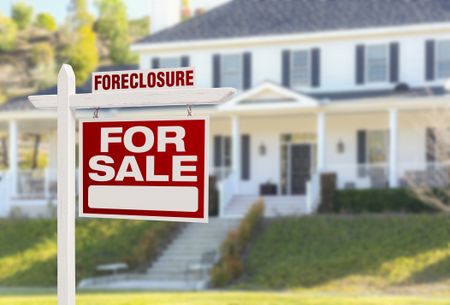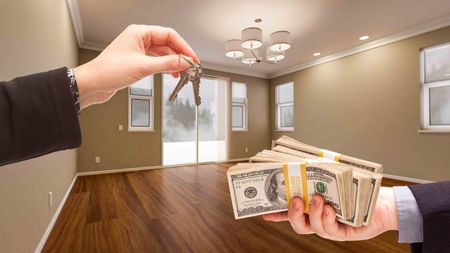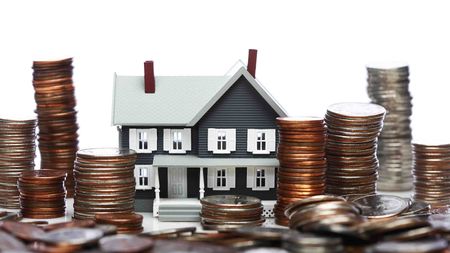Your Energy Crisis Solved
Soaring utility bills mean it's time to do triage on the biggest losers.

Feeling pinched by utility bills? It's no wonder: Since 2001 home-energy costs have more than tripled, rising from an average of $600 annually to $1,900. There are plenty of ways to trim costs this summer, including turning down the air conditioner, closing your blinds, adding weather stripping and insulation and getting rid of an old refrigerator in the basement. The savings will be especially dramatic if your home shows symptoms of energy illness: draftiness, a room that's always too hot or too cold or even a musty smell.
Give your home a physical
Start with a free and easy self-assessment: Compare your utility bills with those of a neighbor whose home is about the same size as yours. If your bills are notably higher, you have a problem. Next, survey your energy use with an online tool such as the Home Energy Saver, designed by the Lawrence Berkeley Laboratory. On its Web site, as well as those of the federal Energy Star program and your local utilities, you'll find tons of energy-saving advice.
But for a comprehensive diagnosis and significant payback, you'll need an energy audit. For a cost of up to about $400, an auditor will spend as long as six hours evaluating your home from top to bottom, including the exterior (how airtight is it?), ductwork (is cooled or heated air going where it should?), heating and cooling systems (are they efficient?), and appliances and lighting (do you need energy-efficient upgrades?). Two vital tools in the auditor's black bag are the blower-door test and infrared scanning, or thermography, which will detect thermal defects such as missing or inadequate insulation and air leaks. The auditor will also check carbon-monoxide levels. You'll receive a summary report with recommendations, including estimated costs, savings and length of payback.

Sign up for Kiplinger’s Free E-Newsletters
Profit and prosper with the best of expert advice on investing, taxes, retirement, personal finance and more - straight to your e-mail.
Profit and prosper with the best of expert advice - straight to your e-mail.
Energy Star says homeowners can cut their energy use 25% to 50%, depending on the condition of the house and how many recommendations homeowners implement. Plus, local utilities and state energy offices often offer incentives and rebates to homeowners for making energy improvements. You may also qualify for up to $500 in federal income-tax credits that you can claim on your 2006 or 2007 return for insulation and energy-efficient windows and doors, roofs, and heating and cooling equipment (the deadline for installation is December 31, 2007). A bonus: Your home's energy efficiency will be a future selling point.
Find an auditor
Some utilities, such as CenterPoint Energy, in Minnesota, have begun to offer professional audits and may subsidize the cost. Or get a referral from your state or local energy office (for a list, visit www.naseo.org). You may also find auditors in the building trades, such as insulation or heating and air conditioning, or check the Yellow Pages under "Energy."
Depending on where you live, you may be able to find a "board certified" specialist. These auditors have credentials from either the Home Performance With Energy Star program, now operating in 12 states, or the Building Performance Institute, operating mostly in the Northeast but expanding. They can also do the recommended work, which will be verified by an independent third party.
PAYOFF: What a Typical Household Could Save
These estimates, ranked by payback period, are for a 2,000-square-foot home. The numbers are national averages; savings will vary by region.
| ENERGY SAVER | EXTRA COST# | ANNUAL SAVINGS# | PAYBACK PERIOD |
| Programmable thermostat | $40 | $100 | 5 months |
| Compact fluorescent bulbs | 30 | 50 | 7 months |
| Furnace | 500 | 400 | 1 year, 4 months |
| Clothes washer | 300 | 50 | 6 years |
| Windows | 600 | 90 | 6 years, 6 months |
| Central air conditioner* | 400 | 35 | 11 years, 5 months |
Get Kiplinger Today newsletter — free
Profit and prosper with the best of Kiplinger's advice on investing, taxes, retirement, personal finance and much more. Delivered daily. Enter your email in the box and click Sign Me Up.

-
 Stock Market Today: Stocks Are Mixed Before Liberation Day
Stock Market Today: Stocks Are Mixed Before Liberation DayMarkets look forward to what comes with the reordering of 80-year-old global trade relationships.
By David Dittman Published
-
 Stagflation: What It Is and Why Retirees Should Care
Stagflation: What It Is and Why Retirees Should CareStagflation — the economic bogeyman of the 1970's — may return to the US. Here's what it could mean to your retirement.
By Donna Fuscaldo Published
-
 How to Find Foreclosed Homes: Best Foreclosure Listings Sites
How to Find Foreclosed Homes: Best Foreclosure Listings SitesMaking Your Money Last Find foreclosed homes for sale on these foreclosure listing websites. Search for properties on these free, paid or government sites.
By Bob Niedt Last updated
-
 Luxury Home Prices Rise as the Rich Dodge High Mortgage Rates
Luxury Home Prices Rise as the Rich Dodge High Mortgage RatesLuxury home prices rose 9% to the highest third-quarter level on record, Redfin reports, growing nearly three times faster than non-luxury prices.
By Kathryn Pomroy Published
-
 Four Tips for Renting Out Your Home on Airbnb
Four Tips for Renting Out Your Home on Airbnbreal estate Here's what you should know before listing your home on Airbnb.
By Miriam Cross Published
-
 Five Ways to Shop for a Low Mortgage Rate
Five Ways to Shop for a Low Mortgage RateBecoming a Homeowner Mortgage rates are high this year, but you can still find an affordable loan with these tips.
By Daniel Bortz Last updated
-
 Looking to Relocate? Plan for Climate Change
Looking to Relocate? Plan for Climate Changebuying a home Extreme weather events are on the rise. If you’re moving, make sure your new home is protected from climate change disasters.
By Rivan V. Stinson Last updated
-
 Retirees, A Healthy Condo Has a Flush Reserve Fund
Retirees, A Healthy Condo Has a Flush Reserve FundSmart Buying Reserve funds for a third of homeowner and condo associations have insufficient cash, experts say. Here are some cautionary steps you should take.
By Patricia Mertz Esswein Published
-
 Cash Home Buyers: New Services Offer Help Making All-Cash Offers
Cash Home Buyers: New Services Offer Help Making All-Cash OffersBecoming a Homeowner Some firms help home buyers make all-cash offers on homes. Weigh the fees before you sign on.
By Emma Patch Published
-
 Home Sale Prices in the 50 Largest Metro Areas
Home Sale Prices in the 50 Largest Metro AreasBecoming a Homeowner What’s happening in the market where you live?
By the editors of Kiplinger's Personal Finance Published